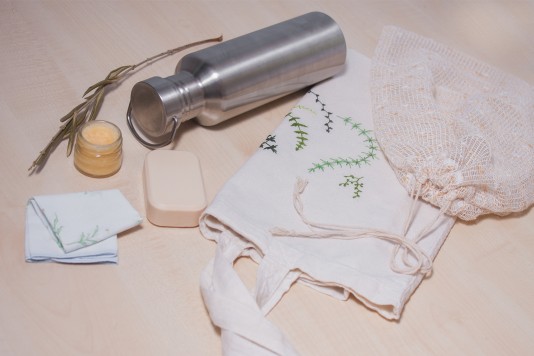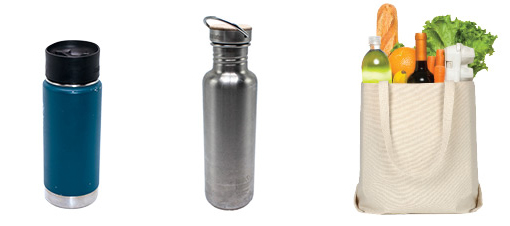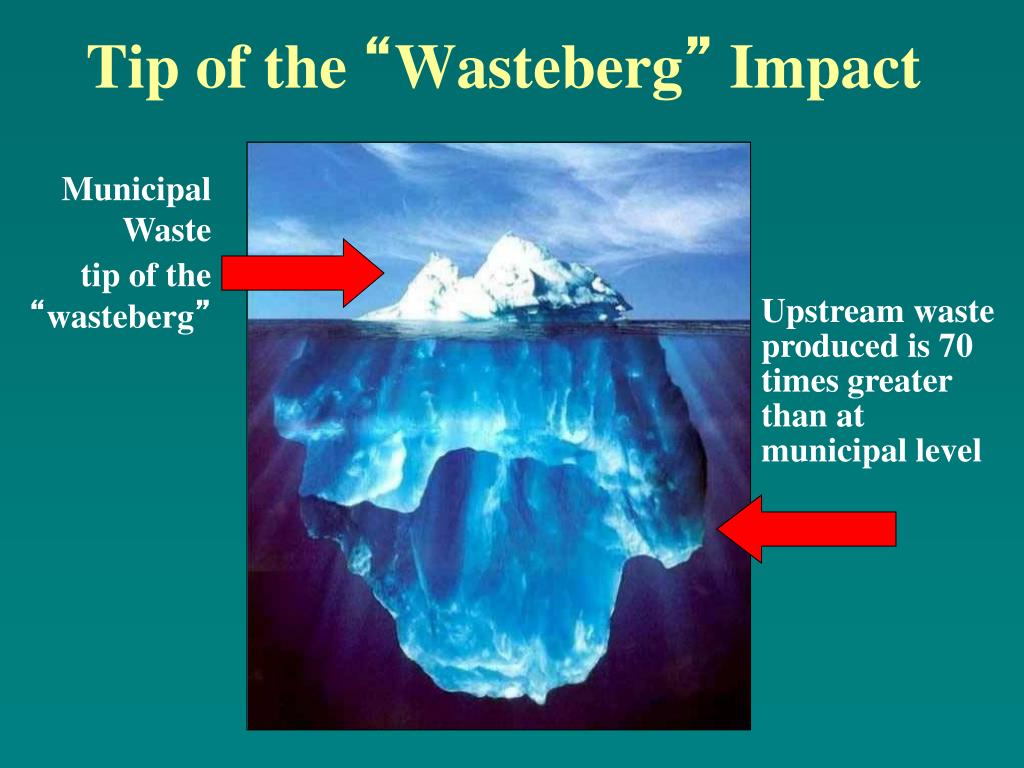Waste Reduction Habits
Recycling and composting are all well and good, but avoiding the production of an item through reduction or reuse is even better. 94% of the resources used in making a product become waste even before the product is ever manufactured! Let’s help our planet’s resources last for generations to come by using what we already have.
Use the lists below to see what good habits you already practice and what new practices you can try. If you can think of more ways to reduce waste, please email us.
Easy Switch at Home

- Clean up spills with an old rag.
- Use cloth napkins at meal time.
- Use a handkerchief.
- Pack lunch contents in reusable packaging.
- When receiving unwanted catalogues, call or email the company to be taken off the mailing list.
- For envelopes, use the ones that come inside other envelopes. (Cross off the bar code first!)
- Wash out plastic bags for reuse. See this article for plastic bag replacement options.
- Use reusable adhesive or clips instead of tape when possible.
- Use paper tape instead of plastic tape to enclose cardboard boxes. The paper tape gets recycled along with the boxes.
- Use rechargeable batteries in items used on a consistent basis.
- Print on the backside of used paper when possible.
- Have the printer set on double-sided as default.
- Pay bills online.
- Sign up for paperless statements (e.g., utilities, banking, credit cards).
- Write notes on scratch paper.
Easy Switch away from Home

- Take reusable bags into stores.
- Put produce loose in the grocery cart or in a reusable bag.
- Drink water from a water fountain or from a reusable bottle.
- Bring a reusable take-out container into restaurants and bakeries.
- Say "no straw” with your drink order.
- Take a travel mug in for coffee fill-ups.
- Buy the larger-sized version of a product and make your own individual servings.
- Buy the reusable over the disposable version of a product (e.g., razor).
- Choose recyclable over non-recyclable packaging on comparable products.
- Use the bulk bins and bring your own container.
- Leave the plastic utensils behind on a take-out order.
- Forego the plastic lid on a take-out drink when practical.
A Little More Effort Required

- Search used goods sites when in need of something (e.g., Buy Nothing, Freecycle, craigslist).
- On comparable products, choose the one with no or less packaging.
- On comparable products, buy the one with the most post-consumer content.
- Make your own home cleaning products.
- Buy locally (farmers’ markets, home stands) and bring your own baskets/bags.
- Make your own foodstuffs (bread, yogurt, desserts).
- Buy a higher quality item over its more easily broken counterpart.
- Subscribe to catalogchoice.org to cut down on unsolicited mail.
- Organize get-togethers or parties with reusable dishware in mind. BI Zero Waste has a tableware lending library available for use by local nonprofit and private occasions.
- If you receive a product in non-recyclable packaging, contact the company to ask them to switch to compostable or recyclable packaging.
Rethink
Try a short-term waste audit:
- For one week, throw away whatever trash you normally would, but do so by category. Have small, open boxes and in one put the plastic stuff, in another the paper-based items, in a third the food, etc.
- After a week, inspect each container. Can you use a more durable item the next time in place of something you discarded (e.g., a reusable container over a plastic bag)? Are there things that you can actually recycle or compost? (Did you know that Bainbridge Disposal curbside yard waste accepts all types of food, as well as shredded paper and soiled paper such as tissues, towels, and napkins?)
- After thinking it over, try making one change for the following week to reduce what goes in your trash.
Plastic Reduction Tips
The organization Beyond Plastics has made a guide to help you reduce your exposure to microplastics. Read the tips here.

